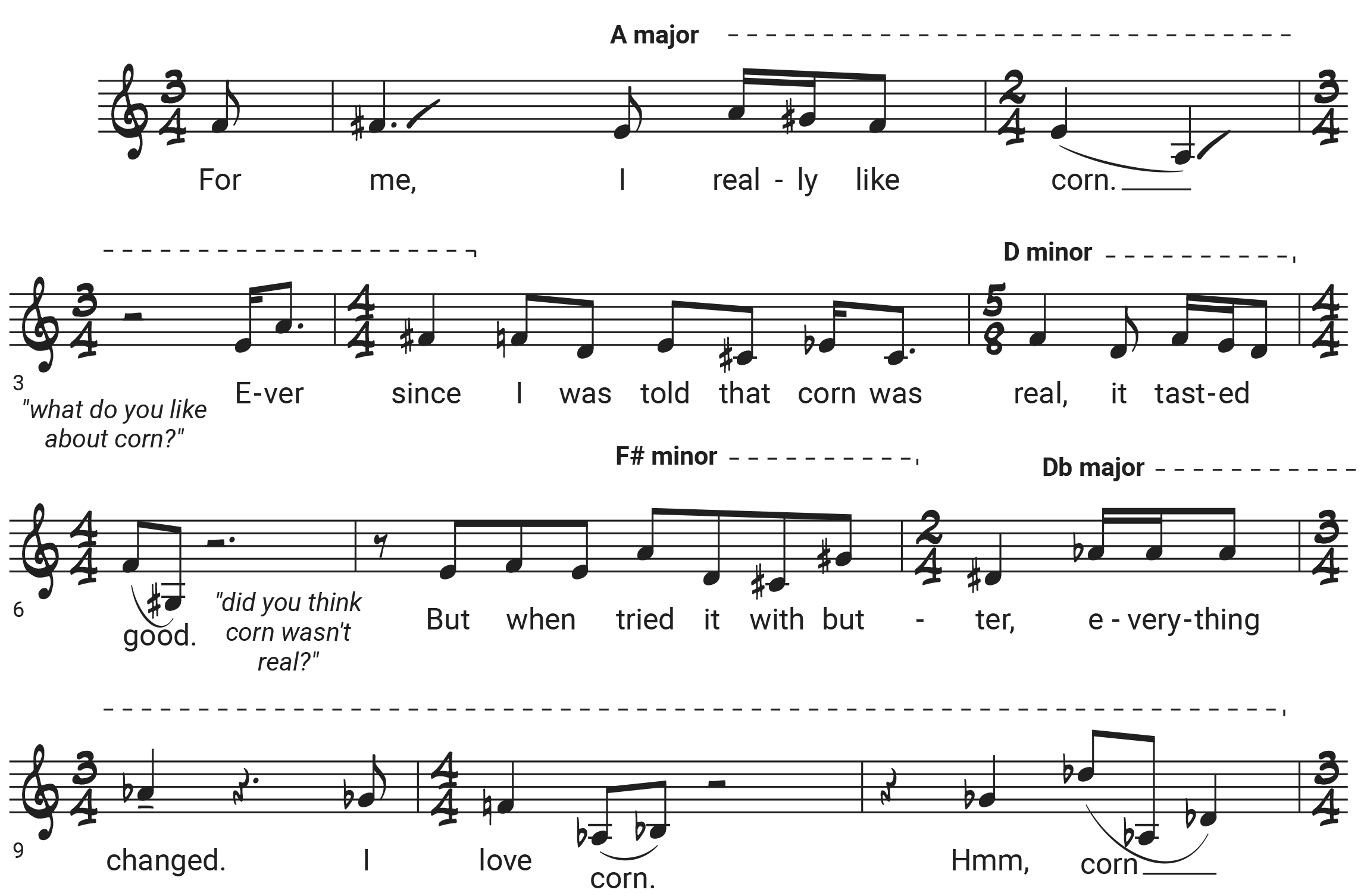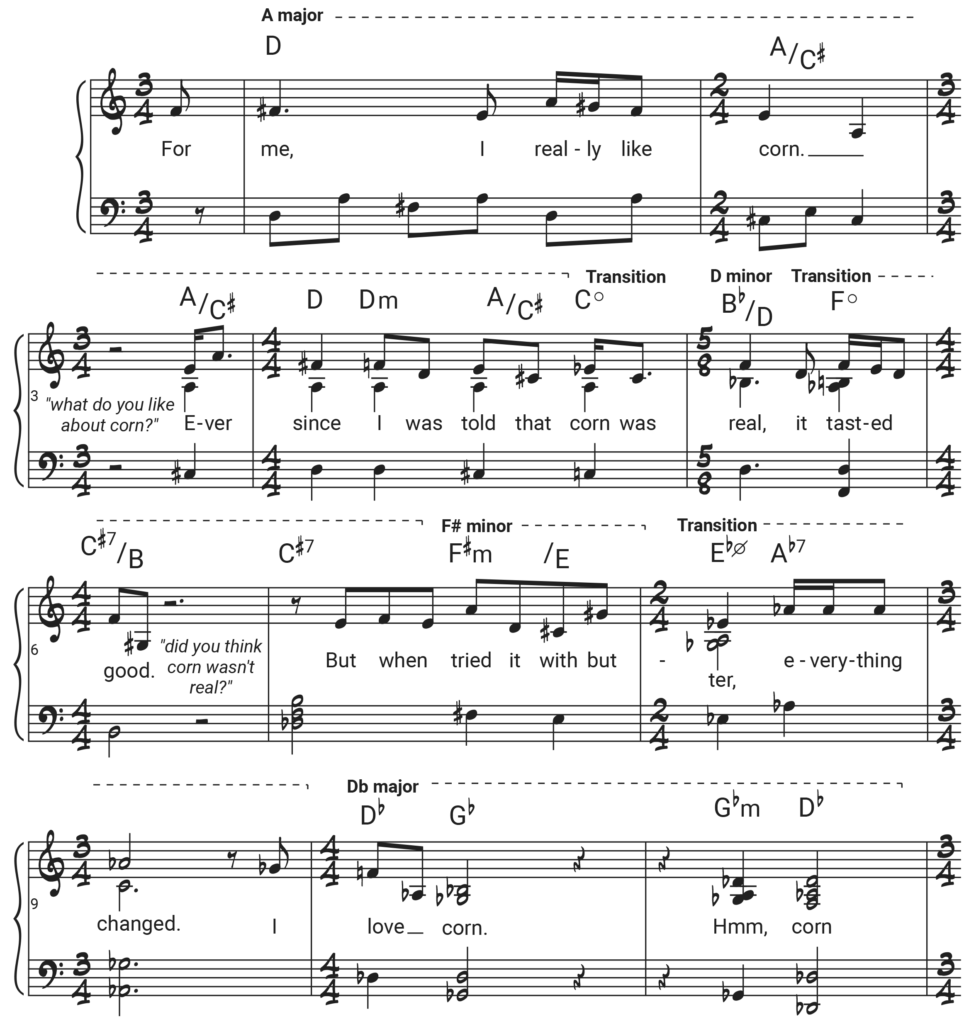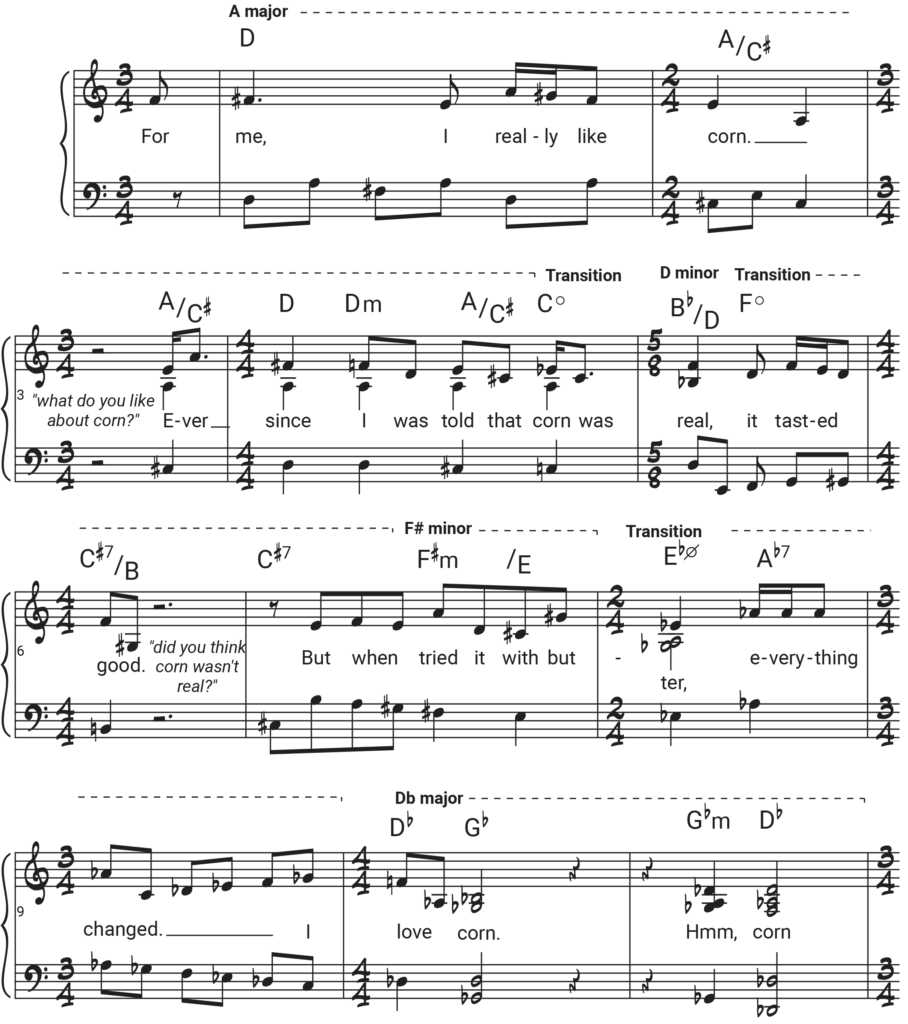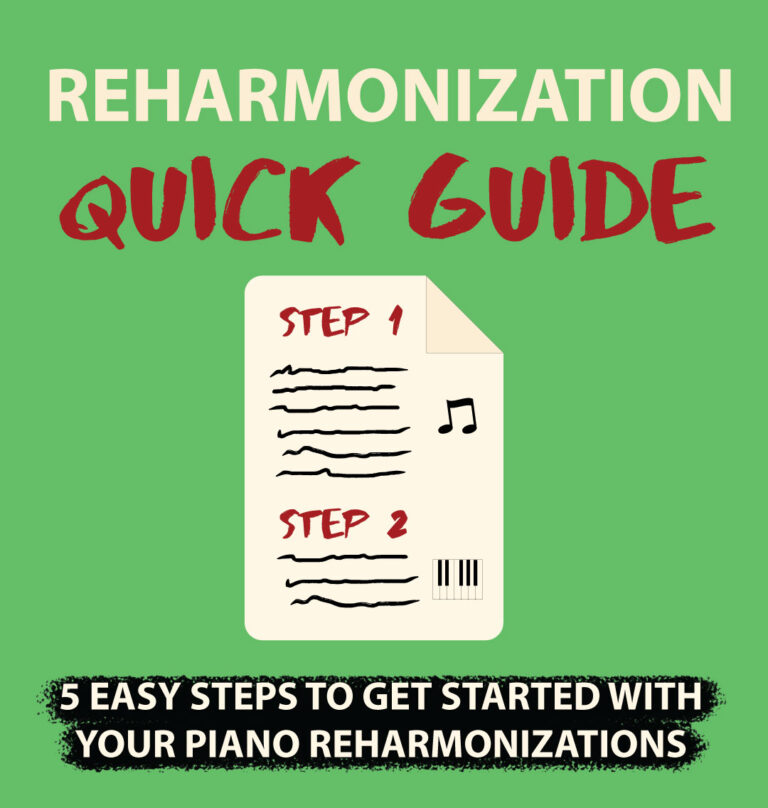A crazy thing happened to me this month: I went viral on TikTok for writing music to a kid talking about how much he loves corn.
I’m not the first one to do something like this. It’s called harmonizing speech, and it’s the process of taking an existing audio clip of someone talking, like an interview or a political speech, and composing music to it. You can do this by creating a melody, or chords, or both — they just have to fit the rhythm and cadence of the speech. There’s always a melody to be found in words, and sometimes just the exercise of writing it is enough in itself. But other times, the music brings out some quality of the clip you couldn’t see as much before — to make it funnier, or grander, or just enhance what’s already there.
In this blog post, I’ll show you how to harmonize speech yourself.
Examples
The first time I remember seeing speech harmonized was during the election cycle of 2008. Pianist Henry Hey did a famous harmonization of an interview with Sarah Palin in which she responded with a hard-to-follow answer.
Hey lightly scored the question with with soft and pleasant chords, but then Palin’s word salad is highlighted (and to be fair, somewhat exaggerated) by disjunct chord progressions, melodies, and rhythms on the piano:
Another great example comes from Brazilian multi-instrumentalist and composer Hermeto Pascoal, who harmonized a 1989 speech by then President Fernando Collor de Mello. You hear a fragment of speech that sounds normal, and then you hear a melody around it and it sounds completely different. Here’s “Pensamento Positivo” from his 1992 album Festa Dos Deuses:
Jazz pianist Jason Moran did a great speech harmonization on his 2006 album Artist in Residence, using a talk by philosopher Adrian Piper. Like in the Pascoal example, he plays the original recording first, and on the repeat, finds the melody in the words and harmonizes it. Moran goes on to improvise on this ‘theme’, moving farther and farther away from the original speech:
When I studied at the Conservatory of Amsterdam, a pianist a few years ahead of me, Tony Roe, gave an incredible graduation concert featuring his trio Tin Men and the Telephone, which featured several instances of harmonized speech. The following is their tune “De Bal” from their 2010 album Moetjenou?! The speech comes from a soccer match where instances of the commentator saying “de bal” (the ball) were extracted and put together, and then harmonized by the trio, followed by improvisations where instances of “de bal” are still ingeniously incorporated. You have to listen to it:
In the last few years, quite a few musicians have found a niche on social media harmonizing speech. One of them is pianist / YouTuber Charles Cornell. This is his harmonization of a rant by a Bill Nye the Science Guy on Last Week Tonight.
Turns out rants are a popular subject for reharmonizations. Here’s one by pianist Joey Barrett, based on a famous gamer on Twitch complaining about other gamers’ extravagant gaming rigs (another favorite of mine):
Then there are those who found their calling in harmonizing pets. I have a real soft spot for Kevon Carter (@kevoncarter), who does amazing gospel- and jazz-influenced accompaniments of cats, dogs, birds, and sometimes children. Though it’s (mostly) not human speech, the principle is the same: turning random pitches into recognizable melodies and chords. Hiroki-San (@hirokisan79), a Japanese pianist, also does great pet reharms.
My own speech harmonization
Finally, I myself decided to join the bandwagon. I harmonized an amazing interview with a kid talking about corn, from Recess Therapy. These few videos really took off on Instagram and TikTok, collectively reaching over two million views (mom, look, I went viral!). Part of the reason I’m doing this blog post is because many asked how to do these harmonizations.
How to harmonize speech, in 5 steps
So now that you have heard a few examples, how do you actually go about making these? In these 5 steps I’ll show you the easiest way to harmonize speech.
Step 1: pick an audio sample
This seems obvious, but your choice greatly matters here. The most important thing is that you absolutely love the original video or audio. You’re about to hear it dozens, if not hundreds of times, so you better pick something you won’t get sick of soon. The first time I saw the corn kid interview, I knew immediately that I had to do a reharmonization, because there are few videos I loved more than this one.
Secondly, pick a short fragment! Longer audio increases the difficulty greatly because it’ll be way harder to connect the different sections. I’ll be using the beginning of my favorite video ever:
Step 2: transcribe the melody
This is where the real work starts! Transcription is the process of translating the source audio to distinct pitches on your instruments, creating a single melodic line.
People have suggested that you need perfect pitch for this. This is false — you do not need perfect pitch (I don’t have it) to transcribe anything. What you do need is patience (which I do have).
It’s also useful to have software that can slow down audio and loop sections. I’ve been using Transcribe! for many years and love it.
Start by playing the first few seconds of the audio clip, and try to find the corresponding notes on your instrument. Oftentimes, the spoken words don’t fit an equal temperament (the 12 notes on the piano), so what you’re looking for is an approximation. Also, the pitch often changes within one syllable, so just try to find a note that seems closest. It does not need to be perfect at this stage.
If you’re having a hard time finding the notes, try this: Start by playing a C on your instrument together with the first word. This is probably not the right note yet. Next, try the Db above it. Then try the D above that. Keep going up until you find the note that sounds closest to the spoken word.
Once I’ve found the pitches, I like to write down the melody, so I can more easily analyze it. For example, this is the beginning of my ‘Corn Kid’ interview transcription:

Two of these words are fluctuating in pitch a lot, ‘me’ and ‘corn’. The latter starts at E and moves roughly down to A, before jumping up again. I tend to write all of this down, because it gives me more possibilities when choosing harmonies. I also grouped the notes in time-signatures that I thought made sense.
Step 3: find key centers
Now comes the exciting part: adding harmonies. Start by identifying key centers. The second half of this melody is clearly in A major, with a descending line (A – G# – F# – E) which fits the key of A major perfectly. Let’s write this down as a key center:

The first part of this melody is more ambiguous, as it goes chromatically from F – F#. We’ll tackle this in the next step.
The next few key centers that I identified are D minor, F# minor, and Db major:

Step 4: find chords
Now that you’ve established some distinct key centers, it’s time to add in chords that fit within that key, and massage the the parts of the melody that don’t seem to fit.
Let’s see if we can find a way to fit ‘for me’ in the key of A major. The F natural doesn’t fit the key, but the F# does. For example, it could fit a D major chord, the IV-chord in A major.

Now, if you play this along with the recording, it works quite well! The F natural is now an appoggiatura, a chromatic tone leading us to the important chord tone, F#. Next, let’s add in the A major chord on the second part. I think it’s nice to have it come in on ‘corn’, as it feel like the end of a cadence:

Step 5: connect the chords and finalize
Inversions
The last step is to find ways to connect the chords with each other in a musical way. For example, we could use inversions to make the notes move smoothly from one chord to the next, creating good voice leading. If we invert the A major chord, the bass note gently moves down from D to C#:

Left hand pattern
We could also change the left-hand accompaniment. In this case, I used the so-called ‘Alberti-bass‘ to create a gentle, classical-sounding accompaniment:

Connect key centers
To connect different key centers, you’ll have to be a bit creative and find chords that bridge them. For example, the next key center is D minor, so I’m using a diminished chord (Co) to briefly modulate to that key (to Bb major chord, the VI-chord in D minor). The next key center is F# minor, so I’m using another diminished chord (Fo) and a dominant seventh chord (C#7) to get there. These are the connecting chords that I came up with:

Add counter-melodies
The last step is to bring your arrangement to life with some countermelodies. These melodies respond to or interact with the top melody. Especially in the transition parts, a countermelody can help push the harmony forward. I’ve added some on the F diminished chord, the C#7 chord, and the Ab7 chord:

And that’s how you harmonize speech! There’s truly no right or wrong — go by your ears and some good old trial-and-error. Experimentation is key here!
Conclusion
I hope you find these steps helpful in creating your own speech harmonizations. It might be a bit tedious at first, but once you get the hang of it, it’s an extremely fun and actually hilarious process.
If you would like to know more about how to harmonize a melody, I recommend you start with my free reharmonization quick guide. In this guide, I explain five important techniques that will get you started on your harmonizations, including anchor chords, secondary dominants, mixture, and diminished chords. I’m working on a full ebook on this subject as well, so stay tuned for that!
Lastly, I’m collecting a Spotify playlist of harmonized speech examples, so if you know of any more, please let me know in the comments below. Feel free to follow and listen to the playlist here:

